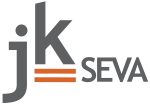Workforce Scheduling in the Hospitality Industry – Part 1/2
Description In part 1 of this two-part blog series we explore some of the benefits of leveraging an automated workforce scheduling system for your hospitality business.
The hospitality industry by nature has to deal with a number of uncertainties when it comes to managing its workforce. Many unpredictable events can impact worker in terms of timetabling, management and payroll administration amongst other things.
With the help of workforce scheduling a number of these difficulties can be better handled especially when employing a system that is automated.
In a nutshell workforce scheduling is optimizing your staff management from a number of perspectives. With a workforce scheduling solution your hospitality establishment will be better equipped to tackle a sudden rise in footfall, especially during the holiday seasons. You will also be better prepared to take on sudden emergencies and ensure appropriate employee delegation based on their skill, availability and productivity levels.
Advantages of Workforce Scheduling
- Reporting
Taking advantage of the in-depth reporting features of workforce scheduling is one of the primary advantages of such a solution. An automated system can track and record a wide range of productivity, and performance parameters can also be set to log any data of your preference.
With this information you can then make better informed decisions in the future, such as when allocating staff for an important event hosted at your venue. In such a scenarios you can uphold the reputation of your hospitality establishment by choosing staff with a higher punctuality track record than the others.
- Re-allocating Shift Timings
An automated workforce scheduling software can display each individual employee’s shifts as well as those of their colleagues. This allows them to give management a timely notice of leave while also filling in an employee who can take their place continuing the smooth flow of services.
Employees can also enjoy a certain level of autonomy when they are given a platform through which they can compensate for absence due to personal events by coming to a shift swap agreement with a colleague. This eliminates the need for managerial involvement and simplifies shift re-allocation.
- Daily Log
A system for logging employees’ daily hours is crucial because it can make sure that no one is skimming hours off their mandatory time shift. It also ensures that no one is clocking in exorbitant amounts of overtime. This information can be used at a later time to also make informed staffing and scheduling decisions.
An automated time-tracking system also holds value in that it can save you from large fines from the Department of Labor due to overlooked non-compliance with labor laws surrounding overtime.
- Forecasting
Workforce scheduling is best summarized in its ability to plan schedules way ahead of time by analyzing real-time data absorbed so far and predicting ideal timetables that work for the majority of those involved. These schedules can be prepared almost a month in advance that gives everyone ample time to work their personal lives and prior commitments around their work time.
Benefits of Workforce Scheduling
- Limit Turnover
The key to limiting employee turnover in an industry as fast-paced and demanding as hospitality is to do your best at keeping them happy. Independence is one aspect that can play a significant role in boosting employee satisfaction. If your automated workforce scheduling system gives them their schedule a month in advance along with the ability to swap shifts with other willing employees, it can greatly improve employee satisfaction levels thereby reducing turnover.
- Reduce Overexertion
When any business follows an hour-based work system it has a higher risk of employee burnout or overexertion. This can be dealt with by using a better scheduling system that is flexible and spreads out the workload over a reasonable timeframe. Preventing employee fatigue is an important managerial responsibility that can boost employee retention a great deal.
- Boost Productivity
Overstaffing and understaffing are two primary problems that you can do away with when you implement an automated workforce scheduling system. This can in turn allow you to work within team schedule preferences and thereby drive productivity levels.
- Improve Quality of Service
Employees will be more likely to show up on time now that schedules have been optimized to accommodate their needs. When you have punctual happy staff running the show your hospitality business can deliver better services and boost customer satisfaction.
- Cost-Cutting
Workforce need predictions are no longer speculation when you have an automated system in place to forecast needs based on historical data. Now you won’t have to unnecessarily spend on staff that wasn’t required in the first place.
- Prototype Scheduling
A number of combinations and permutations can be experimented with when you have scheduling software working for you behind the scenes. Doing the same without one would be exceedingly difficult as you’d have to consider a large number of factors to make an accurate assumption.
In part 2 of this blog series, we’ll explore some tips and tricks to get your workforce scheduling system working like a well-oiled machine.
If you’d like to harness a workforce scheduling solution for your hospitality business, JK Seva would be happy to help. We offer an expanded variety of custom designed solutions that are tailored to fit your exact expectations. We specialize in upgrades, implementations, training, custom solutions and software development. Our customer focused remote and flexible teams believe in the spirit of community when it comes to delivering comprehensive workforce management. Leverage our capabilities for true advantage. Reach out to us at JK Seva to find out more.
Subscribe to our Newsletter
We do not share your data with anybody, and only use it for its intended purpose.





